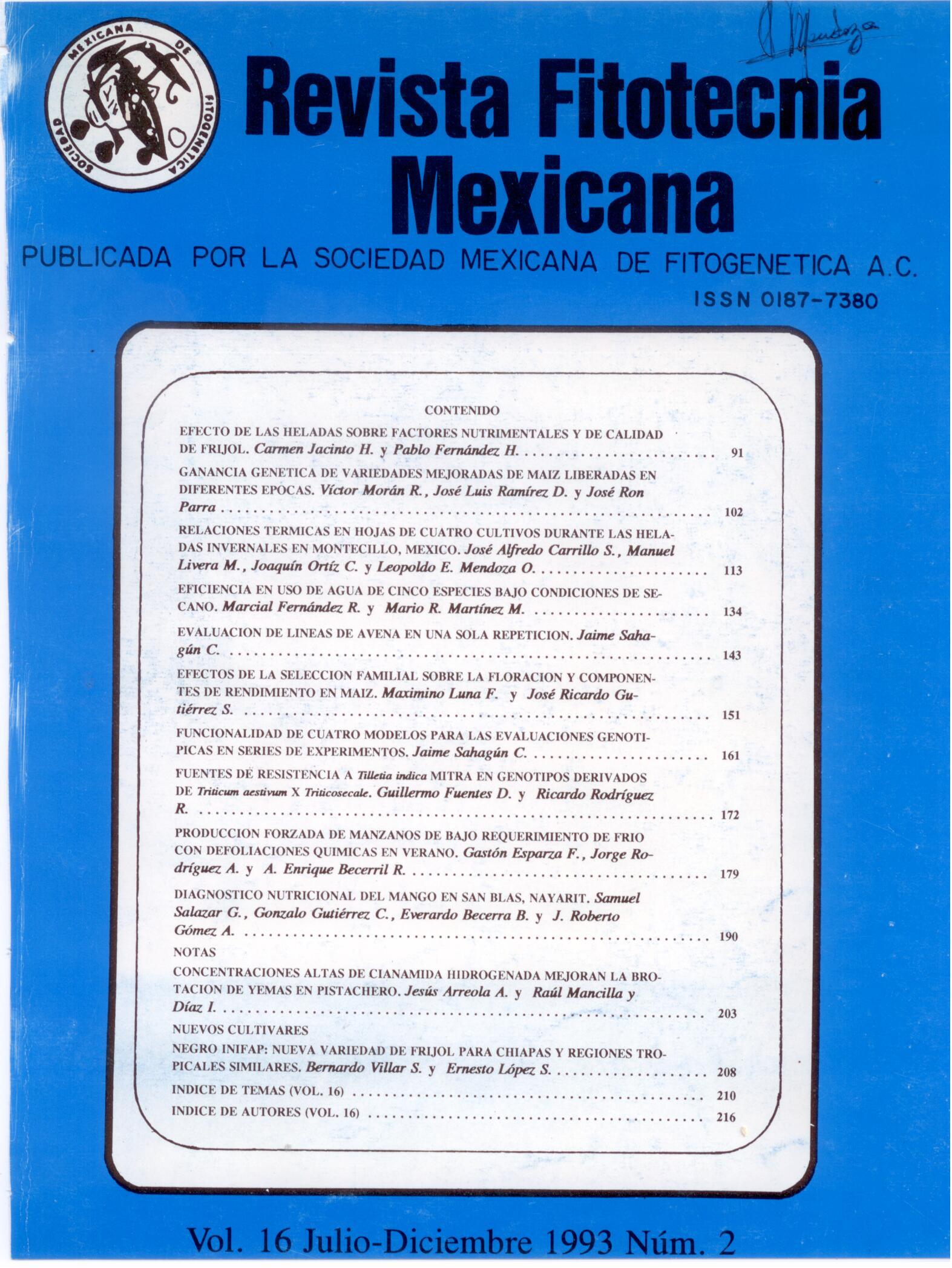FORCED PRODUCTION OF APPLES WITH LOW CHILL REQUIREMENT THROUGH CHEMICAL DEFOLIATIONS IN SUMMER
Main Article Content
Abstract
Because of the importance of defoliation in forced production in fruit trees, a research was done during 1990 ( cycle 1-C1) and 1991 (cycle 2-C2) in Chapingo, México, to establish the effects of mineral oil (citrolina) 2% + ZnS04 3% and hidrogen cyanamide (H2CN2) 1.5%, applied as defoliants, during vegetative and reproductive stages of Dorsett Golden and Anna apple trees. The defoliants were applied on June 15 and July 15, 1990. Floral development at the time of spraying was evaluated. Buds were further developed by July 15 when Anna presented stamen primordia and Dorsett Golden gyneceum primordia, as their most advanced developmental stages. Defoliation was greater and faster with the application of mineral oil-ZnSO4 than with H2CN2. lt was particularly low for the June 15 application, specially for Anna. On C1, winter defoliation was delayed due to 'artificially' induced defoliation though it ocurred to a lesser degree with H2CN2 applied on June 15. On C2, this delay caused budbreaking to be slackened too. On C1, budbreaking was advanced with H2CN2; however, budbreaking was similar, regardless of the defoliant used. On C1, blossoms was more abundant with mineral oil-ZnSO4 and with the second defoliation, particularly for Anna. lt was related to the developmental stage of the flower buds. On C1, fruit set was low for Anna regardless of the defoliation date; conversely, Dorsett Golden showed improved fruit set with a later second defoliation. Generally speaking, higher budbreaking on C1 could be associated with the same response on C2, just as abundant flowering on C1 was associated with lower budbreaking and fruit set on C2.

